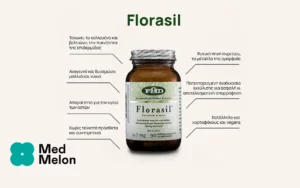Scientific Names of Rice Bran and Germ Oil: Oryza sativa [Fam. Gramineae]
Forms:
Rice Bran and Germ Oil, expeller-pressed in the absence of light, heat and oxygen.
Traditional Usage:
– Lowering LDL Cholesterol
– Prostatitis
– Vascular Disorders
Overview:
Rice is an annual grass in the grass family, Gramineae. Asian rice is classified as Oryza sativa. Asian rice bran and germ oil is rich in linoleic acid Omega-6 Essential Fatty Acids (35%), oleic acid (Omega-9 monosaturated fats) (40%) and Vitamin E (32.3mg/100g). The oil is also extremely rich in phytosterols (1190mg/100g or 167 mg/tbsp), mainly beta sitosterol. Phytosterols have been shown to be as effective as conventional drugs for relieving frequent urination in aging men suffering from prostate conditions and quickly lower cholesterol. The oil also contains a compound called gamma oryzanol that reduces absorption and increases excretion of cholesterol. Gamma oryzanol is also an effective antioxidant. Research findings reported at a symposium sponsored by the American Heart Association indicate that Rice Bran Oil has the unique ability to lower harmful LDL cholesterol levels up to 30% without reducing HDL or “good” cholesterol that protects against heart attacks, and that “…people would need to consume less than two tablespoons of the oil a day to get the benefits.” These health benefits are due to rice bran oil’s natural balance of mono and poly unsaturates, unsaponfiables, plant sterols which reduce cholesterol absorption, gamma oryzanol which reduces absorption and increases excretion of cholesterol and a significant amount of naturally occurring tocopherols (vitamin E). Animal studies coupled with a human clinical trial have demonstrated that rice bran oil can be recommended for the replacement of saturated fat in the diet. More importantly, ingredients such as oryzanol, which are unique to rice bran oil, have the ability to reduce blood cholesterol levels up to 40 percent and are associated with significant reductions in early atherosclerosis. Rice oil also has a pleasant taste and can be used for its light, delicate flavor on salads.
Active Ingredients:
Rice bran and germ oil contains: Alpha Tocopherol 32.3mg/100g; total saturated fats 19.7g/100g; Monounsaturated fats 39.3g/100g; Polyunsaturated fats 35g/100g; Including: 33.4g omega-6 EFA; 1.6g omega-3 EFA; Phytosterols 1190mg/100g; Triterpene alcohols and Tocotrienols. Each tablespoon (14 grams) contains: Polyunsaturated Fats 5.5g as Linoleic Acid (36.6%) and Linolenic Acid (1.8%); Monounsaturated Fats 6g as Oleic Acid (46%); Saturated Fats 2.5 grams. (Information taken from The National Agriculture Library’s USDA Nutrient Database for Standard Reference at http://www.nal.usda.gov).
Suggested Amount:
Rice bran and germ oil: Take one to two tablespoons of rice bran and germ oil per day. Rice bran and germ oil, rich in omega-6 and 9 fatty acids but lacking in important omega-3 EFAs, should be taken as part of a balanced oil blend.
Drug Interactions:
None known.
Contraindications:
None known.
Side Effects:
Rice bran and germ oil, taken as a part of a well balanced diet, does not cause any side effects. Because rice bran and germ oil is rich in omega-6 and 9 fatty acids but contains no omega-3 EFAs, it should be taken as part of an EFA balanced oil blend. The consumption of old or improperly stored rice bran oil has been associated with an increased risk of gastrointestinal ulcers. It is very important to avoid using rancid oils for human consumption, especially rice bran oil.
References:
Awad AB, Fink CS. 2000. Phytosterols as anticancer dietary components: evidence and mechanism of action. J Nutr. 2000 Sep; 130(9): 2127-30. Review.
Berges RR, Kassen A, Senge T.2000. Treatment of symptomatic benign prostatic hyperplasia with beta-sitosterol: an 18-month follow-up. BJU Int. 2000 May;85(7):842-6.
Cicero AF, Gaddi A. 2001. Rice bran oil and gamma-oryzanol in the treatment of hyperlipoproteinaemias and other conditions. Phytother Res. 2001 Jun;15(4):277-89. Review.
Erasmus, U. 1993: Fats that Heal, Fats that Kill. Published by Alive Books, Burnaby, B.C., Canada. pp. 1-456.
Jariwalla RJ. 2001. Rice-bran products: phytonutrients with potential applications in preventive and clinical medicine. Drugs Exp Clin Res. 2001;27(1):17-26.




